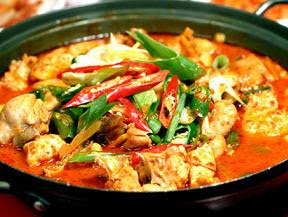Many cities in the world have rivers that run through them. Seoul has formed many river walks and parks in different spots throughout the capital and there are also festivals that are often held near the river.
If you take a taxi or a long distance bus towards the outskirts of Seoul, there is a good chance that you will cross one of they many bridges that go over this river. Seoul also has several subways that go over the river. It may not sound exciting, but especially at night or during a clear sunset, the view can be particularly breathtaking. The subways that cross the Han are as follows :
Line 1 : Yongsan <--> Noryangjin
Line 2 : Gangbyeon <--> Seongnae, Dangsan <--> Hapjeong
Line 3 : Oksu <--> Apgujeong
Line 4 : Ichon <--> Dongjak
Line 5 : Yeouinaru <--> Mapo, Gwangnaru <--> Cheonho
Line 7 : Ttukseom Resort <--> Cheongdam
See the photos below for a Hangang Adventure!
 Upon arriving at one of the Han River parks, we saw families and young couples already enjoying themselves.
Upon arriving at one of the Han River parks, we saw families and young couples already enjoying themselves.




 Upon arriving at one of the Han River parks, we saw families and young couples already enjoying themselves.
Upon arriving at one of the Han River parks, we saw families and young couples already enjoying themselves.


There are several boats docket (and moving) on the river. Some serve as restaurants, others are "water taxis" to transport people from West to East or vice versa
 Arches under one of the many bridges crossing the Han.
Arches under one of the many bridges crossing the Han.

 A walk on the Han is a nice way to relax (or a good spot for a romantic date :D).
A walk on the Han is a nice way to relax (or a good spot for a romantic date :D).



 You might notice a few things from the last series of pictures. A.) Lots of workout equipment on the banks of the Han. B.) Totem poles meant for decoration and getting your balance on. C.) Rebecca couldn't do a pull up to save her life. :D
You might notice a few things from the last series of pictures. A.) Lots of workout equipment on the banks of the Han. B.) Totem poles meant for decoration and getting your balance on. C.) Rebecca couldn't do a pull up to save her life. :D

 A eye pleasing sunset.
A eye pleasing sunset.
 Arches under one of the many bridges crossing the Han.
Arches under one of the many bridges crossing the Han.
 A walk on the Han is a nice way to relax (or a good spot for a romantic date :D).
A walk on the Han is a nice way to relax (or a good spot for a romantic date :D).


 You might notice a few things from the last series of pictures. A.) Lots of workout equipment on the banks of the Han. B.) Totem poles meant for decoration and getting your balance on. C.) Rebecca couldn't do a pull up to save her life. :D
You might notice a few things from the last series of pictures. A.) Lots of workout equipment on the banks of the Han. B.) Totem poles meant for decoration and getting your balance on. C.) Rebecca couldn't do a pull up to save her life. :D
 A eye pleasing sunset.
A eye pleasing sunset.











